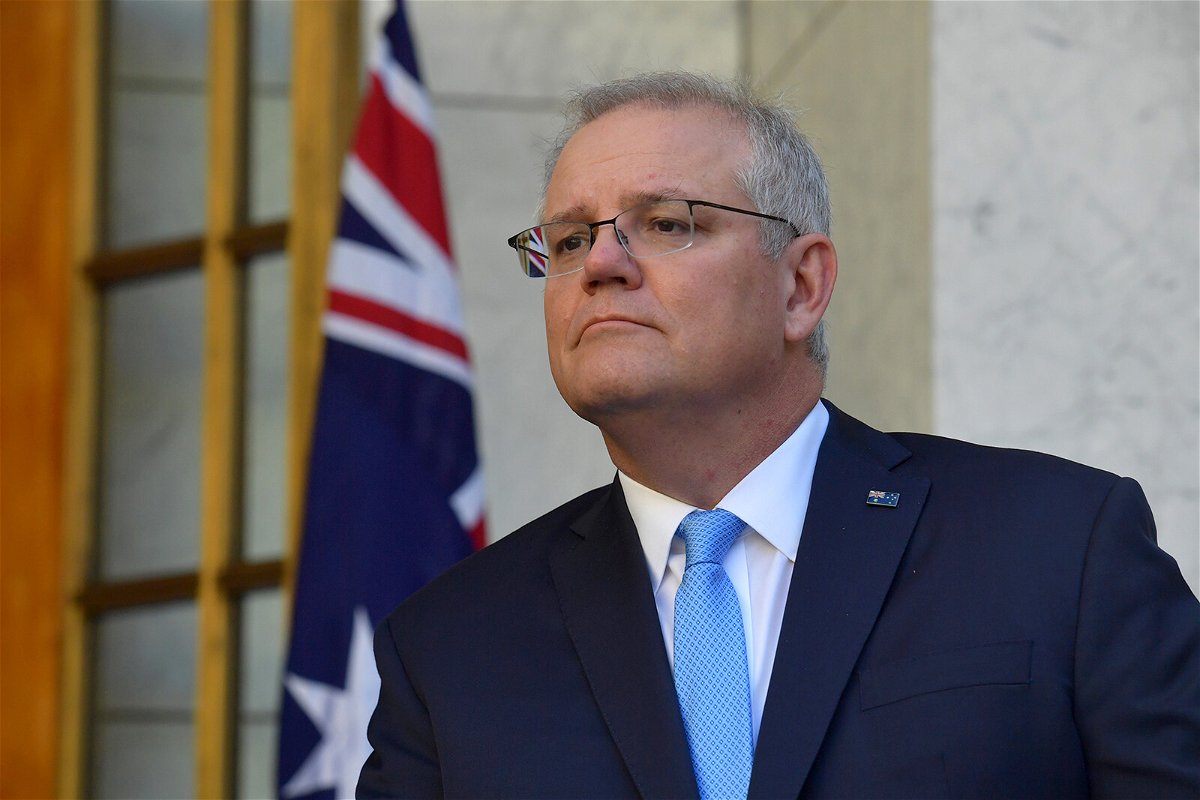Australia’s Scott Morrison under climate pressure at home as biggest state boosts targets

Australian Prime Minister Scott Morrison has said he may not attend the COP26 climate talks in Glasgow this November.
By Angela Dewan, International Climate Editor, CNN
Australia’s Prime Minister Scott Morrison is facing calls at home to increase commitments to slashing greenhouse gas emissions after the country’s most-populous state on Wednesday announced goals nearly twice as ambitious as his government’s.
New South Wales, which includes the country’s biggest city of Sydney, will now seek to halve emissions by 2030, compared with 2005 levels. Its previous commitment was 35%.
The announcement was made by NSW Premier Gladys Berejiklian, who is from the same Liberal Party as Morrison. The Liberals are the country’s center-right conservatives. She said that the plan would not only boost the economy but also create thousands of jobs and slash energy prices in homes across the country.
“Our Net Zero Plan is expected to attract more than $37 billion in private sector investment into NSW, support more than 9,000 jobs, save households about $130 on their electricity bills and help NSW become Australia’s first trillion-dollar state by 2030,” Berejiklian said in a statement.
“This is about putting the policies in place to give industry and investors certainty, not only to protect our planet but to future-proof our prosperity and way of life.”
The growing pressure within Morrison’s own party comes as his government faces scrutiny by Australia’s traditional international allies over what is one of the poorest pledges on emissions in the developed world.
Australia has pledged a cut of 26-28% by 2030 from 2005 levels, around half that of what the US is pledging and well below those of its other close allies, the UK and European Union. Those allies have committed to net zero by 2050 at the latest, while the Australian government has refused to do so.
The governments of every state and territory in Australia has also committed to net zero by 2050, essentially putting the country on track to meet the goal.
NSW Energy and Environment Minister Matt Kean said the state could turbocharge its economy while halving its emissions by 2030.
“We can be a renewable energy super power and as global demand for low carbon products and investments grows, the fortunes of the state are increasingly tied to the fortunes of our planet,” Kean said.
The Morrison government has said it will release a new plan on climate ahead of COP26, but its focus has been on “tech not taxes” and it has not signaled any intention to improve on emissions.
Independent lawmaker Zali Steggal welcomed the NSW government’s announcement in a tweet, saying that the country now needs a federal plan,
“After years of denying and delaying, the Morrison Government is scrambling to come up wit a Net Zero plan,” she said.
CNN has contacted the Prime Minister’s Office for comment. It confirmed to CNN on Tuesday that the Prime Minister was considering skipping the COP26 international climate talks in Glasgow, for which more than 100 world leaders have already confirmed in-person attendance.
Ministers are this week convening in Milan for a pre-COP26 meeting in which different countries will seek to align their goals on issues like when to phase out coal and how to keep focus on containing global warming to 1.5 degrees Celsius above pre-industrial levels, which is required to stave off the more catastrophic impacts of the climate crisis.
Australia is the world’s second-biggest exporter of coal and has said it will continue to mine and sell the fossil fuel abroad well beyond 2030. COP26 President Alok Sharma is looking for an agreement for developed countries to stop using coal by the end of this decade at Glasgow.
Climate Action Tracker, a group that monitors climate policies, said that if the whole world followed Australia’s policies, temperatures would rise by between 2 and 3 degrees.
A recent UN state-of-the science climate report found that Australia is already experiencing more heat extremes and higher sea level rises than the global average because of climate change. Heat, sea level rise and drought are all projected to increase in Australia the more the Earth warms, and annual wildfires are already often devastating to communities, the environment and public health.
The-CNN-Wire
™ & © 2021 Cable News Network, Inc., a WarnerMedia Company. All rights reserved.